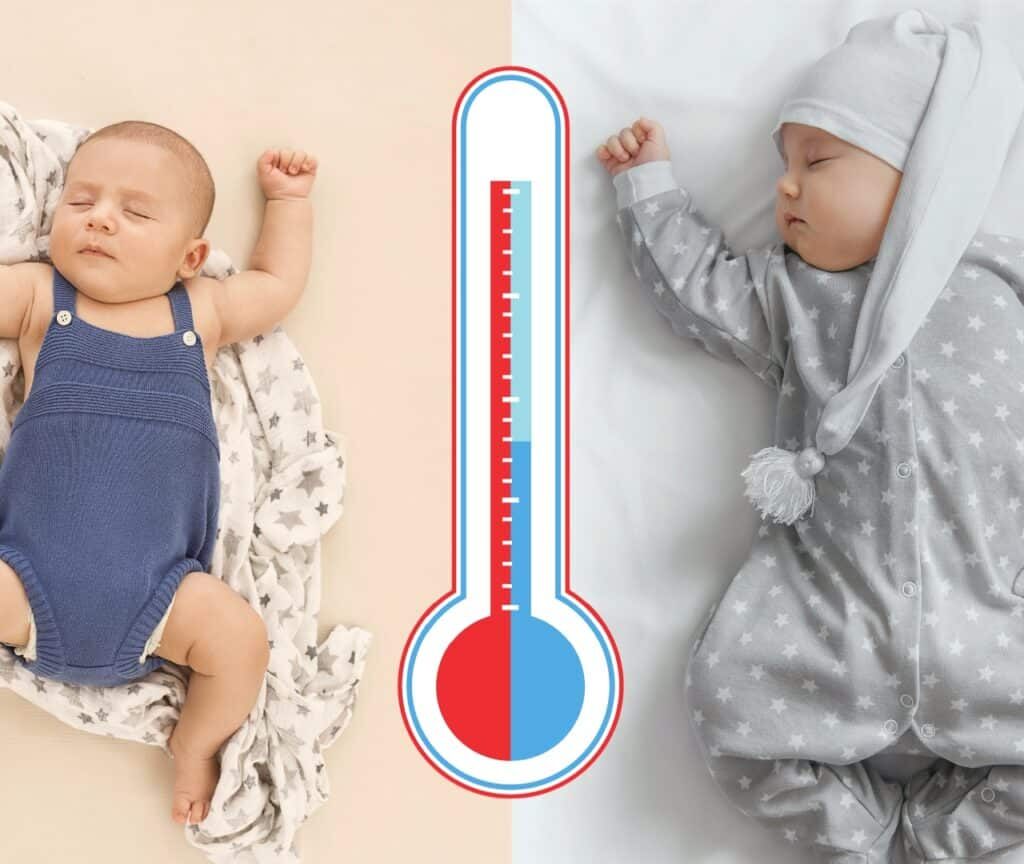When your Baby’s Safety & Comfort, make sure they are dressed properly for sleep. While babies are not as good at controlling their body temperature as parents are, it is important to outfit them properly for the diverse climate situations. This thorough instruction is going to help you in getting your baby dressed for bed
How to Dress Your Baby for a Safe and Comfortable Sleep
Essential Tips for Dressing Your Baby for Sleep: Ensure Comfort and Safety with the Right Clothing Choices, Layering Techniques, and Seasonal Adjustments
1. Consider the Room Temperature

Ideal Temperature: The ideal room temperature for a baby’s sleep is between 68-72°F (20-22°C).Check the Thermostat: Use a room thermometer to monitor the temperature. Adjust the baby’s clothing according to whether the room is warmer or cooler
2. Choose the Right Sleepwear

Lightweight Cotton: In warmer weather, dress your baby in a lightweight cotton onesie or sleep sack. Cotton is breathable and helps in regulating body temperature.
Footed Pajamas: For cooler weather, opt for footed pajamas made of fleece or a thicker cotton blend. These provide extra warmth without the need for additional blankets.
Sleep Sacks: A sleep sack is a wearable blanket that can replace loose blankets in the crib, reducing the risk of Sudden Infant Death Syndrome (SIDS). Choose a sleep sack appropriate for the season—lighter materials for summer and thicker ones for winter
3. Layering Wisely

Layering Basics: If the room is cool, you can layer your baby’s clothing. Start with a onesie and add a sleep sack or a swaddle. However, avoid over-layering, as this can lead to overheating.
Check Baby’s Neck: To ensure your baby is not too hot or cold, feel their neck or the back of their neck. It should feel warm but not sweaty.
4. Consider Swaddling for Newborns

Swaddling Benefits: Swaddling can help newborns feel secure and sleep better. Use a thin swaddle blanket or a swaddle sack designed for sleep
Safe Swaddling: Make sure the swaddle is snug around the arms but loose around the hips to allow for natural movement. Stop swaddling when your baby shows signs of rolling over.
5. Safety First: Avoid Overheating

Signs of Overheating: Red cheeks, rapid breathing, and sweating are signs that your baby may be too warm. If you notice these, remove a layer of clothing or adjust the room temperature
No Loose Blankets: Avoid using loose blankets or bedding in the crib, as they pose a suffocation risk. Always choose safe sleep options like a sleep sack or wearable blanket.
6. Seasonal Adjustments

Summer: In hot weather, dress your baby in a light cotton onesie or just a diaper under a lightweight sleep sack. Ensure the room is well-ventilated
Winter: In cold weather, use a long-sleeve onesie under a thicker sleep sack. Keep the room warm, but not too hot.
7. Check and Adjust

Nighttime Checks: Periodically check your baby during the night to ensure they are comfortable. Adjust their clothing if need
Comfort and Safety: Remember, your baby’s comfort and safety are the top priorities. Dressing them appropriately for sleep will help ensure they get the restful sleep they need.
















